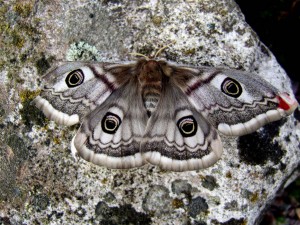 To many people, moths are just a mystery for a number of reasons with one being the fact that most of them fly by night so we generally do not see them. Another element in the mystery is that there are so many different types that identification is a problem. For example, there are so many relatively small moths that are very similar so we tend to dismiss moths in general as “just another of those moths”. However, there are so many aspects to moths, whether large or small, that are fascinating. For example, contrary to popular belief there are many day flying moths, probably more types than butterflies if you look hard enough.
To many people, moths are just a mystery for a number of reasons with one being the fact that most of them fly by night so we generally do not see them. Another element in the mystery is that there are so many different types that identification is a problem. For example, there are so many relatively small moths that are very similar so we tend to dismiss moths in general as “just another of those moths”. However, there are so many aspects to moths, whether large or small, that are fascinating. For example, contrary to popular belief there are many day flying moths, probably more types than butterflies if you look hard enough.
One day flying moth that can often be seen in gardens at this time of the year is the silver Y moth, so called because of the tiny white mark on each of the forewings. This can be read as a Y or as the symbol for the Greek letter gamma (Y). They can be seen feeding on the nectar of various garden flowers and they are unusual in that they also fly at night. Silver Y’s are very strong flyers and the moths we see in our gardens may well have migrated from the Continent. Great numbers of them appear between spring and late summer having flown from the continent which is perhaps surprising as they are only 42 mm across the wings.
Another much larger and fascinating moth is the aptly named emperor moth and the female has a wingspan of 83 mm., the large false eyes are a feature of this moth as can be seen in the photograph of a typical female. Of all the moths this is one of the very unusual ones in that only the males flies by day whereas the females fly at night. If that was not enough the two sexes have their own special way of getting together. The newly hatched females produces large amounts of insect hormones, a chemical that attracts the males. She sits, often on heather in open moorland, and just awaits the arrival of the male. This can mean, in the right circumstance we can actually see the large males “honing in” on her as they smell the fragrance. If the female is sat on heather this is appropriate as the caterpillars feed on this along with, occasionally, other plants such as purple loosestrife or bramble. The caterpillars are large and conspicuously bright green.
As with butterflies moths, vary considerably in size and one of the largest is a very formidable looking insect indeed. It is one of the family of very large moths called hawk-moths and the largest is impressively called the death’s head hawk-moth. This is because of the skull pattern on the head that looks very realistic. The size has rightly frightened many people but both the adult and the large caterpillar are completely harmless. The measurements seem staggering as the adults are 11.5 cm across the wings whilst the impressive caterpillar grows to a length of 12.5 cm. (yes, that is 5 inches). To add to all of this, if you touch the adult moth it can utter a high pitched squeak which is totally unexpected from a moth.
Until several years ago very few people in the Highlands recorded moths mainly because of the difficulty in identifying them. This has now changed remarkably as there are official recorders covering all areas, including the islands, and many people who trap them in their gardens, by various means, to identify them. All the different types of traps such as bright lights at night, or searching during day have one proviso, none of the moths are harmed in any way as even in the overnight traps they are carefully released after closely looking at them. There are probably more moth enthusiasts in the Highlands now than butterflies or dragonflies and probably even more than wild flower recorders. Computers have also helped a great deal and several people, some of them the official reorders, will identify images of moths sent on the screen by email. Books and leaflets have also helped as there are more and books coming out every year.
Tags: highland wildlife
